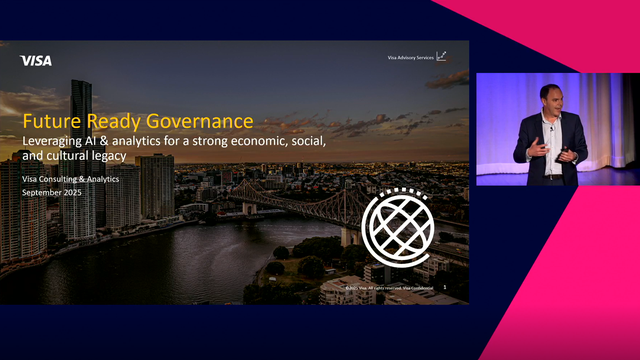
According to the OECD’s (Organisation for Economic Co-operation and Development) 2018 Science, Technology and Innovation Outlook Publication, governments are increasingly using behavioural insights and design thinking to demonstrate dynamic policy-making capabilities and deliver on the changing expectations of citizens, companies, and innovators.
Behavioural insights combine the theory from cognitive science, social science, and psychology with experimentally determined knowledge to discover how people make decisions and influence decision-making.
Design thinking is a user-centric methodology that tackles complex problems through user empathy and solution-based creativity. By looking deeper into their users’ experiences, needs, and motivations with these two practices, governments can then effectively experiment and innovate themselves.
Embracing this global trend, most Canadian government departments have been using innovation labs to apply an experimental approach to making policies, processes and products. Similar to prototyping, experimentation tests new ideas and methods on a small scale, often to eventually implement the change on a larger one.
Case #1: Increasing the Energy Efficiency of Homes
In 2018, Natural Resources Canada’s Office of Energy Efficiency, the Province of Alberta’s CoLab, and the City of Edmonton collaborated on a project to find out “how might they improve the residential labelling and reporting service experience and uptake to improve energy efficiency in homes?” Using a citizen-centered approach and design method, the team tested a series of prototypes, including
- messaging and reframing through Google ads and brochures,
- partnerships with neighbourhoods and communities to raise awareness, and
- a redesigned version of EnerGuide that addressed identified issues.
This project provided “Natural Resources Canada and partners with an example of how collaboration across jurisdictions and upfront user research can inform opportunities to design, test and scale improvements directly with citizens and stakeholders.”
While maintaining a user-centered mindset with a clearly defined goal/problem to be solved (in a how-might-we statement) and by testing prototypes and adjusting based on feedback, this experimentation project is a prime example of the power of design thinking.
Informed by this project, two spinoff experimentations were conducted with Experimentation Works Canada. One sought to determine the level of clarity in the information communicated through the EnerGuide residential label by testing participants on their interpretation of the data shown. The other experimented with behavioural insights and message design to determine the best way to encourage energy efficiency. Read more on the results and insights gained here.
Case #2: Increasing Female Recruitment in the Canadian Armed Forces (CAF)
Throughout 2017 and 2018, the Impact and Innovation Unit (IIU – formerly the Privy Council Office’s Innovation Hub) partnered first with the CAF to obtain insights into the causes of low female recruitment and then with the Department of National Defense (DND) to analyze the most effective media advertising strategy to recruit more women. Using the principles of behavioural insights, the first research project outlined 20 recommendations that would increase the number of women in the CAF. Examples included “try-before-you-buy” programs to let prospective applicants experience life in the CAF before joining and a progress bar to help applicants understand where they were in the application and encourage them to follow through. The second project successfully identified the most effective messages to drive engagement for a potential CAF career with behavioural insights in a small-scale experiment.
Along with examining secondary sources through a behavioural insights lens, members of the first research project conducted interviews with CAF women analyzed correspondence sent to applicants during the recruitment process and visited multiple CAF recruitment centers. Illustrating the design thinking process, they also went through the recruitment process themselves to gain a deeper understanding of applicants’ experience. Physically putting themselves in their end-users shoes (empathizing at its best) allowed the team to gain deeper insights into recruitment barriers, especially for women. Then, knowing the pain points of the application process, they could effectively ideate to improve recruitment and even test the effectiveness of different marketing approaches.
Case #3: the Department of Canadian Heritage’s Paul Yuzyk Youth Initiative for Multiculturalism
The Department of Canadian Heritage experimentally repurposed the Paul Yuzyk Lifetime Achievement for Multiculturalism as a youth microgrant in 2018 in partnership with Experimentation Works Canada to engage youth in anti-racism and anti-discrimination efforts.
The initial results were promising, with the number of application submissions increasing from 7 to 70. Although measuring the exact impact of racism and discrimination proved difficult, the experiment was a success in participant satisfaction. In the post-initiative survey, 95% of participants were willing to recommend the initiative to a friend, and 86% expressed great satisfaction overall. However, it was also clear that many improvements were to be made, such as simplifying the administrative and application processes to make them more accessible to youth.
Understanding the end-user experience was crucial to this experiment. By conducting post-initiative surveys and interviews, the team empathized and engaged with grant recipients to improve the initiative and increase future success iteratively. Presently, the award is still being administered as a micro-grant included in The Community Support, Multiculturalism, and Anti-Racism Initiatives Program.
Though not every experimentation was an immediate nor comprehensive success, they all have served as practical learning opportunities and illustrations of the value of design thinking (and behavioural insights) applied to experimentation. With prototyping and experiments, Canadian governments were able to “fail early on a small scale and with low consequences”- so to speak – and iteratively improve and de-risk future policies, products and processes. Empathizing and being user-driven (the core of design thinking) helped focus these projects, ensuring that the correct issues were solved the best way.
Published by
About our partner

Spring2 Innovation
About Spring2 InnovationWe are innovators that inspire unlimited thining. Driven by curiosity, creativity, and empathy we love experimenting and making an impact. Seeing the lightbulb go off for our clients when they break through their perceived limitations is what drives us. We remove barriers for governments and businesses to help them become limitless and #DoUnlimited.What We DoWe provide innovation training, coaching, and consulting for governments and businesses who want to innovate better and get processes, policies, products, and services to market faster and more successfully.
Learn more
































